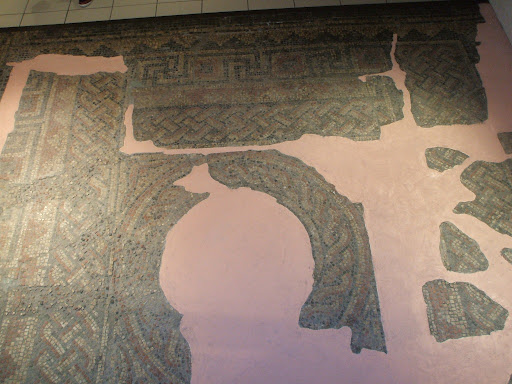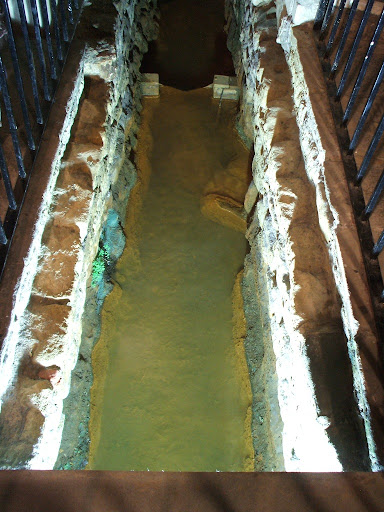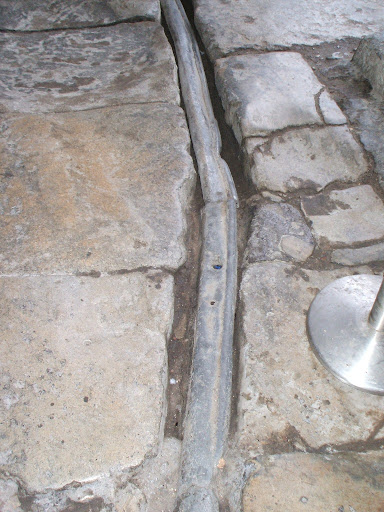I am a real water baby and I absolutely love all forms of water including oceans, waterfalls, lakes, ponds and rivers. I prefer naturally occurring water over, say, swimming pools and fountains but as long as I can hear the soft gurgling or tinkling of running water then I am happy. It is no surprise then that I found something so appealing and romantic in the Roman Baths in Bath. The source of the water is from natural, hot springs emerging from underground but it is the Roman buildings erected at the site in the first century that add up to make this the most unforgettable place to visit.
The Great Bath viewed from the upper level
They estimate that only a fraction of the the original baths have been excavated but they are able to reconstruct portions of the structure to give you an idea of how it might have looked two thousand years ago.


The Temple Pediment and reconstruction of a section of mosaic flooring
The Romans could not explain the source of the hot, rapidly flowing water emerging from underground and so they deemed it to be of divine origin and they built a temple and shrine around the springs.
In these photos, you can see the original water level of the Roman era. The copper-coloured ring around the Sacred Spring shows the water level in the 18th century. The baths (and the whole city of Bath) became a much sought-after location in the 18th century as wealthy patrons sought healing in the baths and Bath developed as a prestigious spa town.
The Romans built the stone reservoir around the Sacred Spring and thus used the water to feed the baths.


The Spring Overflow and the Drain
This is the original Roman drain which still takes the hot water from the spring to the river Avon a few hundred metres away. The flow is a constant 13 litres per second which amounts to 1,170,000 litres a day.
I could have taken a score of photos by the side of the Great Bath, I thought it was that beautiful. Oh wait, I did!
The facade of the Upper Level from the Great Bath
It's really hard to appreciate the baths from these photos because it looks like a couple of piles of stones and holes in the ground! But those piles of stones used to support the floors and allow heated air to flow through, thus heating the rooms in the first instances of central heating. There were various pools and the first instances of steam baths and resting rooms. These were absolutely decadent times and you can almost imagine the shenanigans the ancient Romans got up to in the various nooks and crannies in the compound.




Original roof tiles; an original lead drain; an original Roman occupant*; part of the original roof facade.
* Okay, not really. Just checking if you're concentrating. That is a wonderfully authentic tour guide.
The rings on the walls were left by grateful 18th century patrons who claimed to have been healed from all sorts of ailments.
We threw some coins into the pool and I made a wish that I'd get over the flu!









No comments:
Post a Comment